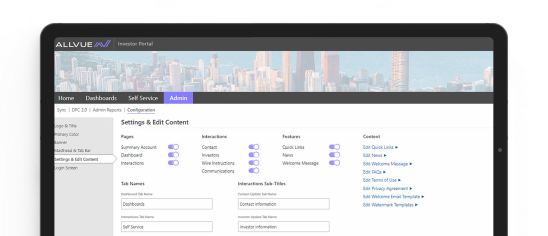
By: Rob Marinaro
Head of Product - Credit
July 7, 2020
- The COVID pandemic will likely increase the distressed debt market from $70 – $100 billion to $350 – $450 billion
- A sustained period of low-interest rates is making private capital and distressed debt more attractive investment opportunities
- Portfolio managers need to make well-informed investment decisions faster than ever, which Excel may not be able to support
What is distressed debt?
Distressed debt is any security that has been issued from a borrower that is likely to enter or is currently within the bankruptcy process.
Investing during Covid-19 volatility
Before the pandemic, the long-running bull market presented few opportunities for portfolio managers to invest in distressed debt. There was significant dry powder in place but nowhere to deploy it. However, the economic and financial upheaval caused by COVID is creating a spike in distressed debt, and now dislocation investment opportunities resulting in a need to deploy capital very quickly.
With more opportunities comes increased competition, and managers must have the right tools in place to help them make rapid, informed investment decisions.
Distressed or dislocated?
According the National Bureau of Economic Research, the U.S. has entered a period of recession. However, unlike traditional recessions that cause a slowdown, the COVID outbreak is forcing businesses to temporarily halt operations altogether.
Despite the recent unparalleled global economic and financial measures put in place, many companies will have burned through their cash reserves, finding it much harder to service their debt. Take the travel industry as a case in point. Seemingly overnight, airports have been transformed from vibrant hubs into desolate locations mainly used to park airplanes.
Companies are not struggling due to poor financial performance or poor management, but because the lockdown has removed their revenue opportunities. The result is temporary and rather than entering a true distressed situation, we’re seeing dislocation.
A crowded distressed debt marketplace
Today, the estimate of the outstanding high-yield debt is about $3.5 trillion. The default rate assumptions before COVID were roughly 2-3%. However, in early May, it was estimated that this could rise to between 10-13% by the end of the year. In essence, that means the distressed debt market would increase from $70 -$100 billion to $350 – $450 billion.
As a result, this burgeoning dislocated debt marketplace is attracting new interest from investors.
CLO prices in the highest rated tranches took a tumble very early on but have for the most part recovered. Many CLOs are now failing their over collateralization ratios, which start to kick protections in place for the investors in the AAA and AA tranches, the highest rated investors. As a result, the industry is beginning to see a reduction in the value of lower-rated tranches, causing CLO managers to create funds that invest in dislocation situations.
The broader fixed income market has seen a dip in its investment returns due to an extended period of low-interest rates. As a result, more institutional investors are building investment strategies around distressed and dislocation opportunities and investing in asset managers who are focused on credit, private debt, and private equity.
With all these extra eyes vying for openings in the market, it’s more important than ever to conduct research and analysis of investment opportunities rapidly.
Speed and clarity are needed to meet the complexities of the opportunity
The increased competition calls for a rapid and accurate research process. Many opportunities involve complex restructurings and bankruptcies, resulting in the need to track vast amounts of information across a wide variety of deal pipelines.
With regards to staying aware of what’s available in distressed markets and available liquidity, it’s important to gain rapid access to information so you can make investment decisions as quickly as possible.
When looking at investments, the ability to track cash flows and nonpaying status is vital if you are to maintain an aggregate picture of where your risk profile is and where you should focus your investments. To this end, Excel has been the ‘go-to’ system for many years. However, tracking financials, complex bankruptcies, and restructurings is extremely difficult to do in Excel at scale.
Allvue’s distressed debt solution
For many portfolio managers, distressed situations and volatility can provide opportunities to reap outsized returns, but only if they have the proper resources in place to leverage those opportunities. They must have a portfolio management system in place that enables them to quickly understand where the markets are, so they don’t fall behind the curve.
In these types of situations, however, reliance on Excel can result in sluggish responses, missed opportunities, and an incomplete debt picture due to disparate data sources.
Instead, managers need an all-in-one solution that provides powerful investment research tools, credit management, analysis, tracking, risk, and exposure if they are to identify investment opportunities quickly. Now, more than ever, managers must take control of the market rather than allowing the market to take hold of them.
Interested in learning more?
For further distressed debt analysis, listen to Rob Marinaro talk on the ABFJ podcast about the increased investment opportunities and need for technology brought on by the coronavirus crisis.
Or, request a demo to find out how Allvue’s portfolio management software can better inform your investment decisions.
More About The Author

Rob Marinaro
Head of Product - Credit
Rob is currently the Head of Product for Credit at Allvue, overseeing and participating in all product functions for the credit business line. Rob initially started on the Professional Services team at Black Mountain Systems and most recently was the Product Owner for the Portfolio Compliance Solution. Prior to joining the company, he was an officer in the United States Marine Corps working in intelligence during Operation Enduring Freedom. Rob has a Bachelor of Science degree in Electrical and Computer Engineering from Carnegie Mellon University.


